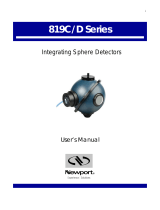Page is loading ...

15 Goodyear St., Irvine, California, 92618 USA Phone: (949) 951-1515 Fax: (949) 951-9237 www.jetline.com
JETLINE 9900 COMPUTER CONTROLLER
TOUCH-UP CALIBRATION
Before you make any changes, it is recommended that you make a copy of the configuration file. To do
this, go into the Channels Configuration Editor and press the “Save As” button on the bottom of the
screen. Change the name by adding today’s date so you can quickly tell when it was copied. After
making a copy, open the old file so that all the changes will be made in the original file. If you need to
bring back the old file, just open the saved file and use “Save As” and change its name back to the
original file.
For all channels except ARC, the Closed Loop Sensitivity must be changed to 0. Write down the current
number so it can be restored when you are finished.
Definitions
Range Minimum Value: No value for this channel can be entered below this value in the weld program.
This value should not be change during a touch up calibration.
Range Maximum Value: No value for this channel can be entered above this value in the weld program.
This value should not be change during a touch up calibration.
Out Minimum Value: The analog voltage that is put out by the 9900-10 board causing the channel to
operate at the minimum value.
Out Maximum Value: The analog voltage that is put out by the 9900-10 board causing that channel to
operate at the maximum value.
In Minimum Value: The input voltage that comes into the module causing that channel to operate at the
minimum value.
In Maximum Value: The input voltage that comes into that module causing that channel to operate at the
maximum value.
TEST PROGRAM
It is best to perform the calibrate program in standard mode. Write a test program that will run each
channel. When you are ready to calibrate a channel, use Dry Run and turn off every channel except the
one that you are testing. For your test program, be sure that ALC is locked out in every segment. Also be
sure to turn off Wait for Arc and Touch Retract, and do not have any pulsing in your program for
calibration.
To do a complete calibration, you will need to run each channel in the low half of its range and in the
upper half of the range. For travel and wire, the time is important. After each test, measure or watch
what the actual distance or reading was.

15 Goodyear St., Irvine, California, 92618 USA Phone: (949) 951-1515 Fax: (949) 951-9237 www.jetline.com
Go into the Channel Configuration Editor and select the channel that you are working with. First you will
need to press the blue button.
After you press the Blue button, the calibration boxes will open up.

15 Goodyear St., Irvine, California, 92618 USA Phone: (949) 951-1515 Fax: (949) 951-9237 www.jetline.com
For each channel, the Program, Read, Diameter and Time boxes will be filled in with what was just run.
You need to enter in the actual value that you measured. For travel it is the distance that the module
moved; for wire it is how much wire came out; for the other channels it is the value that was measured.
After you enter in the actual value, press that green button once. When you press the green button you
will see the In and Out numbers change. If you have made a mistake or would like to go back, press the
Red button. After the changes you will need to press the Save button to keep what you have just done.
You can now run the calibration in the other half of the range.

15 Goodyear St., Irvine, California, 92618 USA Phone: (949) 951-1515 Fax: (949) 951-9237 www.jetline.com
Calibration Tips
Calibration of Current Channel
Make sure that you have a part that can handle the current without burning through. Make sure that you
run the current for about 8 seconds after the program has gotten to the weld segment. You can use the
meter on the power supply to determine the actual reading.
Calibration of Arc Channel
You will need to supply a voltage between the work and the tungsten. In the program, enter the value of
the voltage that is between the work and the tungsten. Run the program for at least 8 seconds in the weld
program. Since you know the actual value, enter that number in the box and then press the green button.
Calibration of Travel and Wire
Always do the calibration of the travel in the forward direction. For these channels you will have to run
the weld program to completion. For the faster speeds you only need the weld time to be from 15 – 30
seconds. For the slower speeds you can go for a couple of minutes. If the delay start for the travel and
wire match the amount of time that the current is in initial and upslope, and you have no stop delay, that is
the time that each channel will be active. It makes it easier when measuring to know if the channel has
moved the correct distance.
Calibration of Hot Wire
Read the hot wire voltage using an AC meter between the torch and the work.
/
